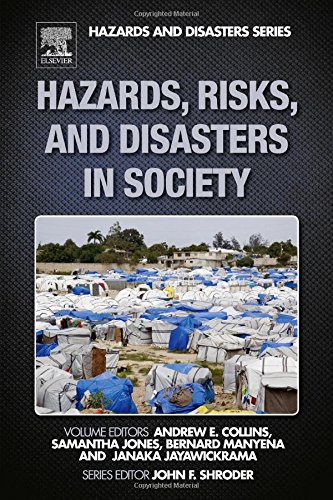

Most ebook files are in PDF format, so you can easily read them using various software such as Foxit Reader or directly on the Google Chrome browser.
Some ebook files are released by publishers in other formats such as .awz, .mobi, .epub, .fb2, etc. You may need to install specific software to read these formats on mobile/PC, such as Calibre.
Please read the tutorial at this link: https://ebookbell.com/faq
We offer FREE conversion to the popular formats you request; however, this may take some time. Therefore, right after payment, please email us, and we will try to provide the service as quickly as possible.
For some exceptional file formats or broken links (if any), please refrain from opening any disputes. Instead, email us first, and we will try to assist within a maximum of 6 hours.
EbookBell Team

0.0
0 reviewsHazards, Risks, and Disasters in Society provides analyses of environmentally related catastrophes within society in historical, political and economic contexts. Personal and corporate culture mediates how people may become more vulnerable or resilient to hazard exposure. Societies that strengthen themselves, or are strengthened, mitigate decline and resultant further exposure to what are largely human induced risks of environmental, social and economic degradation. This book outlines why it is important to explore in more depth the relationships between environmental hazards, risk and disasters in society. It presents challenges presented by mainstream and non-mainstream approaches to the human side of disaster studies.
By hazard categories this book includes critical processes and outcomes that significantly disrupt human wellbeing over brief or long time-frames. Whilst hazards, risks and disasters impact society, individuals, groups, institutions and organisations offset the effects by becoming strong, healthy, resilient, caring and creative. Innovations can arise from social organisation in times of crisis. This volume includes much of use to practitioners and policy makers needing to address both prevention and response activities. Notably, as people better engage prevalent hazards and risks they exercise a process that has become known as disaster risk reduction (DRR). In a context of climatic risks this is also indicative of climate change adaptation (CCA). Ultimately it represents the quest for development of sustainable environmental and societal futures. Throughout the book cases studies are derived from the world of hazards risks and disasters in society.